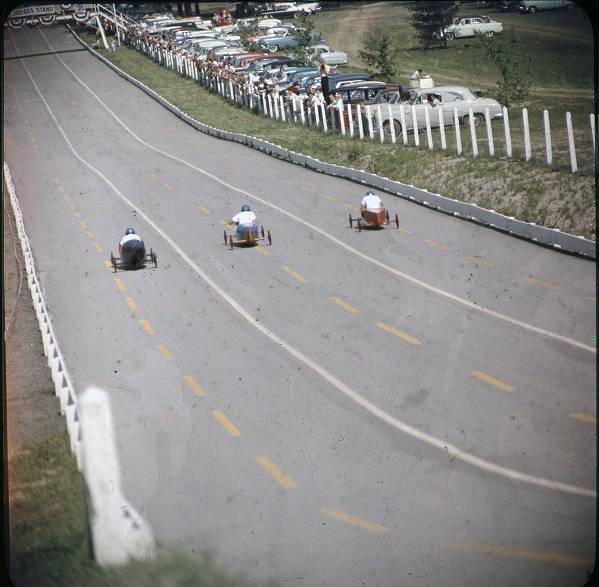The Indianapolis Soap Box Derby began in 1934, one year after the initial race was held in Dayton, Ohio. From 1934 to 1972, the Chevrolet Division of General Motors served as a national sponsor of the annual event; the provided local sponsorship from 1934 to 1964.

In the early years, the Indianapolis event ran on city streets, including a hill at 7700 North Meridian and the hilly streets overlooking the White River. Boys raced gravity-powered vehicles made from oil drums or wooden crates, fitted with wheels from lawnmowers or baby carriages.
The Soap Box Derby enjoyed its heyday during the 1950s and 1960s when the event drew several hundred racers. In 1953, the Memorial Hill was built at 30th Street and Cold Spring Road. The 1,000-foot hill, named for the three-time Indianapolis 500 winner, has served as the venue ever since and is still the longest track in the country to this day. Girls were accepted as competitors beginning in 1971. Since 1934, local winners have advanced to the national championship in Akron, Ohio.

Participation declined after the late 1960s, drawing 15-20 competitors each year by the late 20th century. In 1980, Indianapolis winner Chris Fulton won the national Soap Derby title.
The 21st century has brought some positive developments for the Indianapolis Soap Box Derby. In 2000, the Inner City Youth Racing League (ICYRL) helped support children in the race who would otherwise be at a financial deficit in the now-costly event. Sara Mack won the Indianapolis derby with ICYRL’s support in 2008, becoming its first African American female winner. Marlon Wells won the Indianapolis derby in 2017 and would go on to become the first African American Soap Box Derby world champion in Akron later that year. Updates to the track have included a laser timer, digital weighing station, and scorer’s bridge.

Help improve this entry
Contribute information, offer corrections, suggest images.
You can also recommend new entries related to this topic.